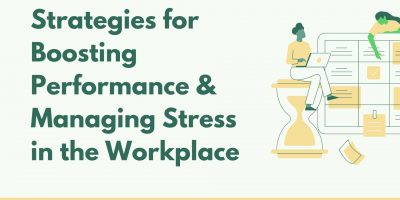
Strategies for Boosting Performance & Managing Stress in the Workplace
Learn practical techniques for enhancing productivity and effectively managing stress in the dynamic workplace environment, ensuring a balanced and thriving workforce.

Performance management is crucial for both employees and employers: Workers need to know how well their work is being received, and employers need a way to formally evaluate and give feedback.
Without performance management, employees can be lost. However, there are both effective and ineffective ways of managing employee performance. Below is curated data and research on performance management.


If done correctly, effective feedback can have great benefits for both the employees and the organization. If you are an employer, there are more than 100 performance management software solutions to help with your employee performance management.
Browse our curated list of vendors to find the best solution for your needs.
Subscribe to our newsletter for the latest trends, expert tips, and workplace insights!

Learn practical techniques for enhancing productivity and effectively managing stress in the dynamic workplace environment, ensuring a balanced and thriving workforce.

From identification through mitigation to monitoring and reporting – master the techniques to ensure successful project outcomes.

Discover how, if done correctly, effective performance management can benefit both employers and employees.

Discover the value of performance management tools in the modern business environment and explore top-performing software programs and their features.
Shortlister Connect is a tool specifically designed to be utilized by the HR and Procurement/Sourcing teams within mid-size, large and jumbo employers. Shortlister Connect allows these teams to efficiently research & identify their optimal vendor partners, track existing vendor relationships & performance and “connect” with other employers to share successes and vendor experiences.
If you are not on the HR or Procurement/Sourcing team within an employer with over 200 employees, you will not be granted access to Connect. Examples of individuals that would not be granted access include, but are not limited to: vendors, students, practitioners, researchers, other non-employers or anyone that is unwilling to identify themselves will not pass our vetting criteria. If you are a consultant, Shortlister offers a specialized product for consultants, called Shortlister Select. You can email Tom Ciccotti at tciccotti@myshortlister.com to learn more about Shortlister Select.
***Shortlister retains the exclusive right to grant or deny access to any party to ensure the privacy of the vendors in our system.
Please login with your LinkedIn Credentials
Used by most of the top employee benefits consultants in the US, Shortlister is where you can find, research and select HR and benefits vendors for your clients.
Shortlister helps you reach your ideal prospects. Claim your free account to control your message and receive employer, consultant and health plan leads.